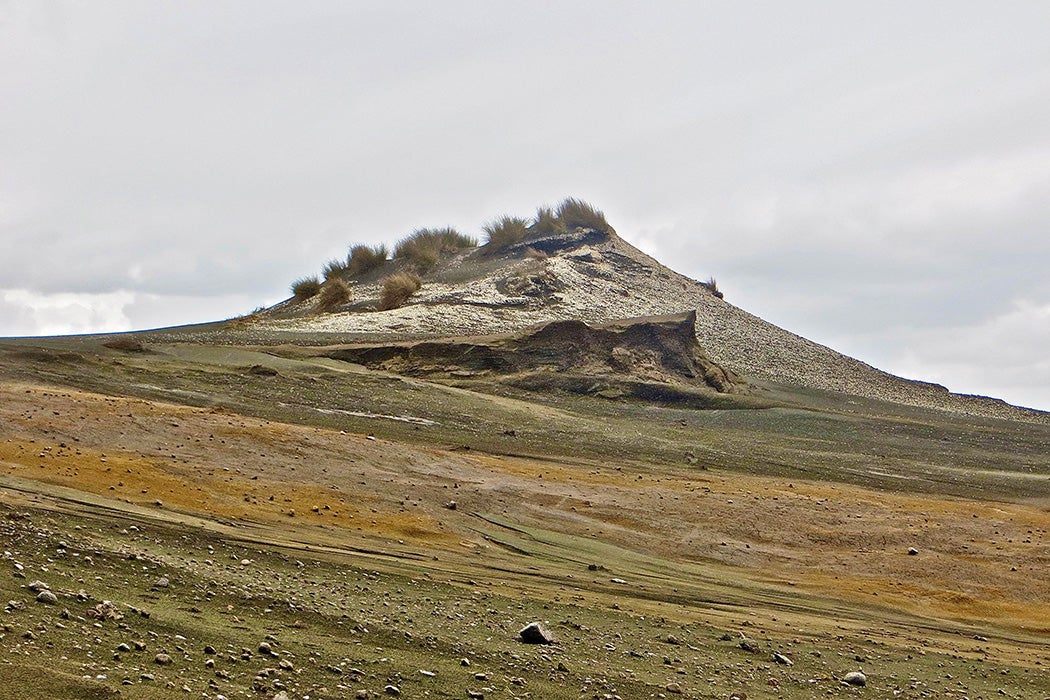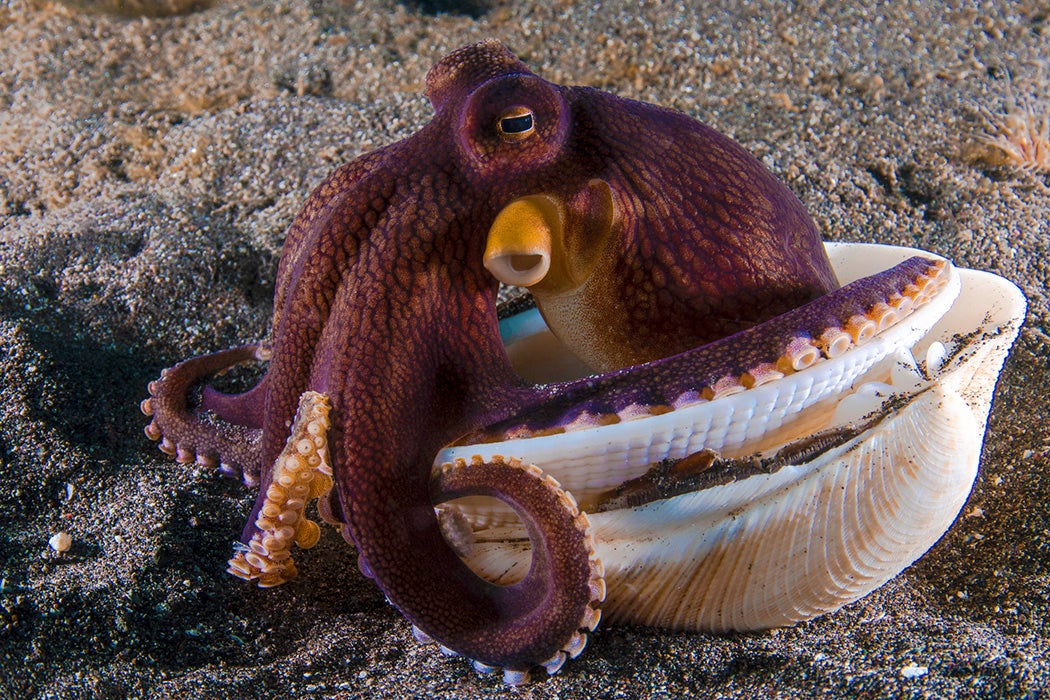To paraphrase an old adage, one species’ garbage is another’s bounty (of research material). Refuse sites called middens can be as simple as a single household’s outdoor pit, or an entire community’s collected detritus, spanning centuries. There are kitchen middens, privy middens, and shell middens, where mounds of shells tossed from consumed mollusks are found, sometimes with pottery, clothing, and plants mixed in.
Danish researchers first concluded in 1843 that the large deposits they found along their coast were made by humans, and presented well-preserved records of diet, cooking methods (if any), the diversity of organisms available, and examples of household crafts. The shells can be carbon-dated, allowing the sites to be assigned to an archaeological timeframe.
For marine biologists, the shell middens created by octopuses present spaces to learn more about the diet of these solitary creatures, and the local biodiversity of the area.

Many species of octopus live in dens, and are classified as “generalist” or opportunistic feeders: a crab wanders by the entrance, and the octopus extends a lunch invitation, as it were. Once the meal is done, the host will put their guest’s remains outside their den entrance (a somewhat garbled telling of this activity inspired The Beatles’ song “Octopus’s Garden”.)
For whatever reason—territorial demarcation, a charitable act (hermit crabs will pick up new shells from the middens), or domestic fastidiousness—many octopus species make middens. One 2008 study examined the middens of 39 common octopuses (Octopus vulgaris), and, among other things, found that cephalopods can be fussy eaters.
Weekly Newsletter
While most of the octopuses had eaten across 75 species of bivalves, gastropods, and crustaceans, a few were more limited (the paper called them “specializing generalists”). One had been eating only amber pen shells (Pinnea carnea). The authors posit this may be the result of octopuses having “different personalities,” which would benefit them in groups, as they wouldn’t all hunt the same prey. However, there may be another explanation: amber pen shells have multiple symbionts, other fish and shrimp that live in and on them. For the price of a single mollusk, this clever octopus was getting a “surf and surf” special. Coming from an order of animals that use tools, learn by observing, and turn off annoying lights, getting the most value from their meal doesn’t seem that odd.
Support JSTOR Daily! Join our new membership program on Patreon today.







